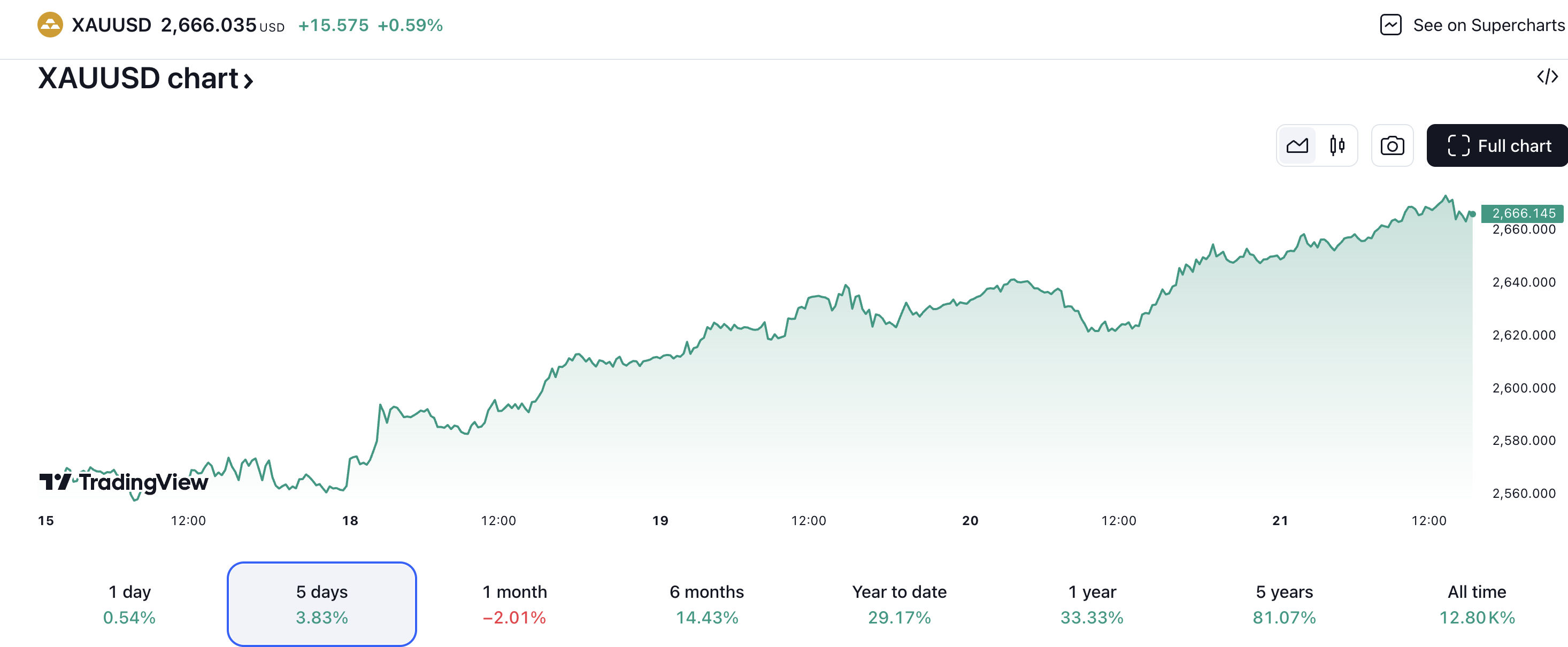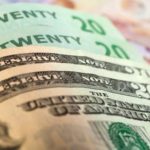The gold market has been on a tear, with prices rising for the fourth consecutive day to reach a 10-day high of $2,670 per ounce. The surge in gold prices comes as tensions between Russia and Ukraine continue to escalate, sparking fears of a new phase in the conflict that may not be contained.
The escalation of geopolitical concerns has led to a significant increase in demand for gold, with the physical gold exchange-traded fund SPDR Gold Trust (GLD) recording positive net flows for four consecutive sessions.
The inflows into GLD and the gains in gold prices are all the more notable given the growing pessimism about the possibility of cutting high interest rates in the US next year. This pessimism is driven by concerns about inflation returning to the rise, as well as cautious statements from Federal Reserve officials, including Jerome Powell.
As a result, markets are no longer expecting a 25-basis point interest rate cut in January, with the probability of such a move now standing at just 15%. This shift in sentiment has led to a decrease in expectations of a rate cut, which has in turn contributed to the rise in gold prices.

However, the main driver of the gold price surge is the escalating tensions between Russia and Ukraine. The US administration’s decision to send anti-personnel mines to Ukraine has been seen as a significant escalation of the conflict, and has led to a increase in demand for safe-haven assets such as gold.
The mines, which were banned from Ukraine during the past two years of war, are subject to wide international restrictions. However, they may be used to confront Russian advances in the Ukrainian depth, and could potentially strengthen Ukraine’s negotiating position in any potential talks.
Russia has already been increasing its pressure in an unprecedented manner in recent weeks, in what may seem like a preemptive move for any negotiations under the new Republican administration. The country needs to expand its control over as much of the territories it has annexed to its sovereignty as possible, and is unlikely to make any major concessions on these territories.
However, there is still room for negotiation on the division of these territories, and Russian President Vladimir Putin is reportedly open to discussing a ceasefire agreement. The sources also said that there is still room for negotiation on the division of those territories.
Despite the potential for negotiations, the mutual escalation of tensions between Russia and Ukraine is a worrying development. The risk of misrepresentation is high, especially with the return of talk of using nuclear weapons again. As a result, investors are likely to continue to seek safe-haven assets such as gold, driving prices even higher.
In conclusion, the gold price surge is a result of the escalating tensions between Russia and Ukraine, as well as the growing pessimism about the possibility of cutting high interest rates in the US next year. As the situation continues to unfold, investors are likely to remain cautious, driving demand for safe-haven assets such as gold.





